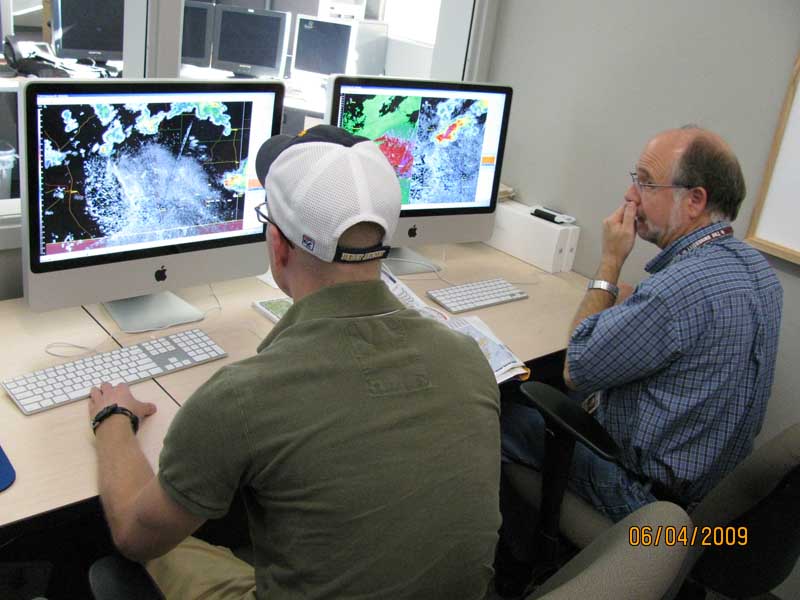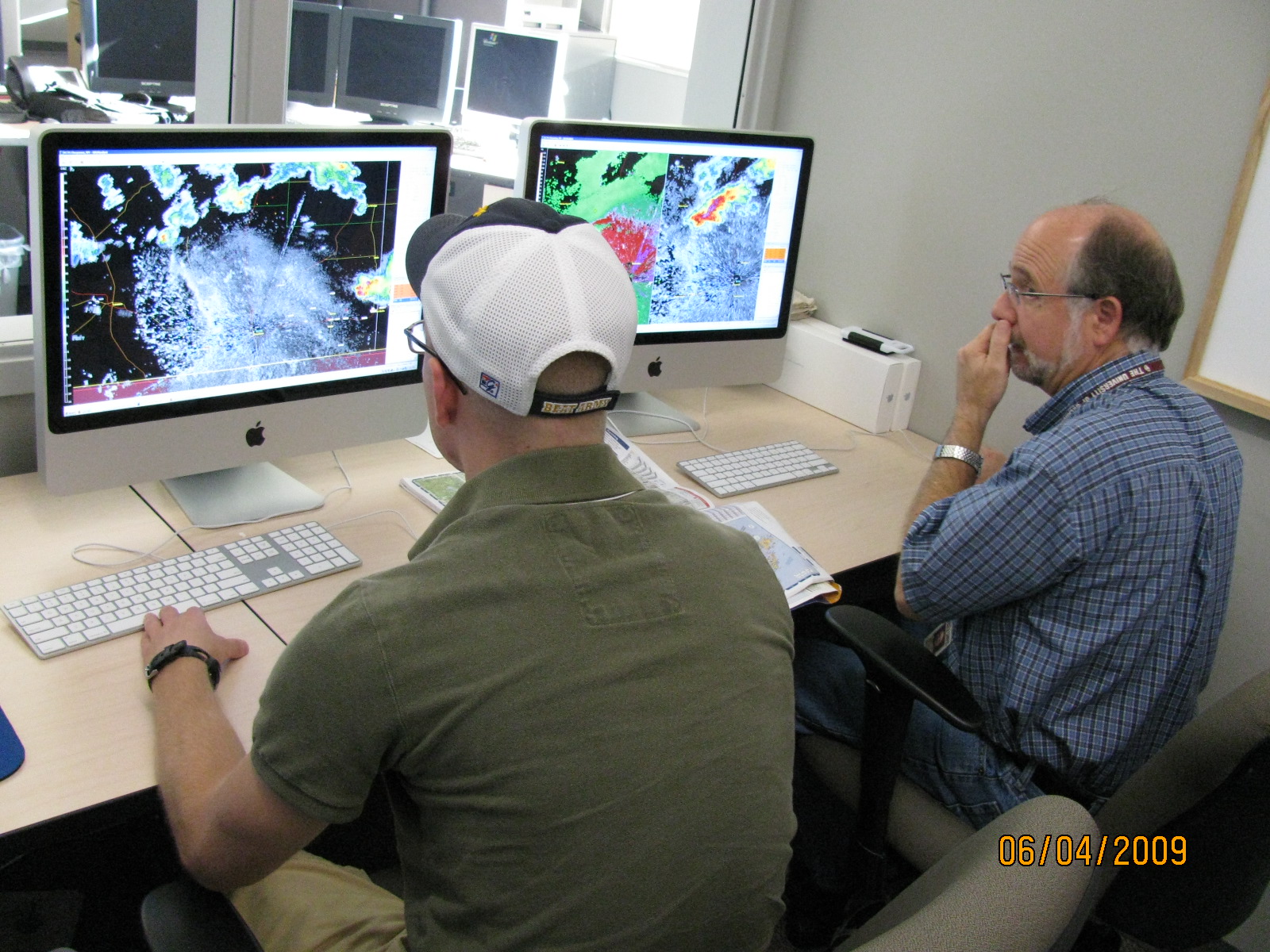NSSL scientists are shadowing NOAA Storm Prediction Center (SPC) operational forecasters this spring to immerse themselves in the front-line operational and scientific challenges associated with forecasting mesoscale hazardous weather.
The program enables NSSL scientists to observe and interact with SPC forecasters at various forecast desks on an occasional basis, during a variety of operational forecasting scenarios. These can range from quieter convective days when there can be more opportunity for in-depth discussion, to more active severe weather days when direct interaction may be minimized but valuable insights can still be gained through observation of the operational decision-making processes.
Shadow shift participants will be looking at SPC forecasting responsibilities, division of duties at various forecast desks and the SPC’s team approach to forecasting. They will also study specific SPC scheduled and event-driven forecast products and their content. They will examine how forecasters utilize scientific knowledge, observational and model datasets, and technological tools to form and issue SPC forecast products.
Background: A culture of collaboration has existed for many years between NSSL researchers and National Weather Service forecasters, beginning with the development of Doppler radar technologies in the 1970s.
Significance: The shadow forecast program immerses scientists in the operational forecasting environment, giving them the insight needed to enhance the operational relevance of their research efforts and accelerate the transfer of science and technology from research to operations.


